
Secrets Behind the Closet Door: Hiding Places You Didn’t Know
November 15, 2024
Restaurant entrance and entryway design ideas in Toronto
November 29, 2024
Secrets Behind the Closet Door: Hiding Places You Didn’t Know
November 15, 2024
Restaurant entrance and entryway design ideas in Toronto
November 29, 2024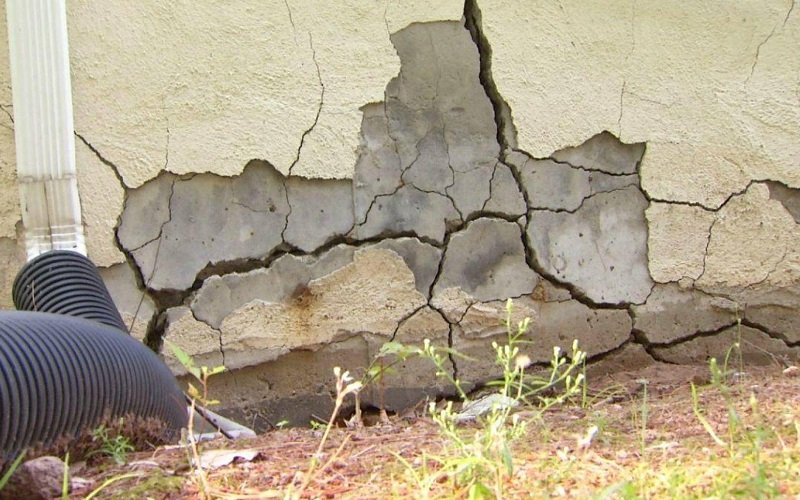
Understanding Basement and Foundation Cracks
In Toronto and across North America, basement and foundation wall cracks are a common occurrence in homes. These cracks can arise due to a combination of environmental, structural, and material factors. Here's a detailed explanation of the causes, types, and repair methods for basement and foundation cracks, along with preventative measures.
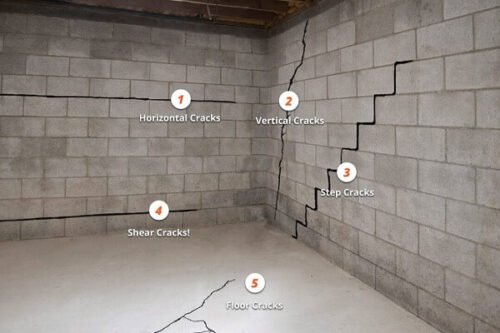
How Basement and Foundation Cracks Form
Common Causes
- Soil Settlement:
- After construction, the soil beneath the foundation may settle unevenly.
- This leads to shifting and cracking in the foundation.
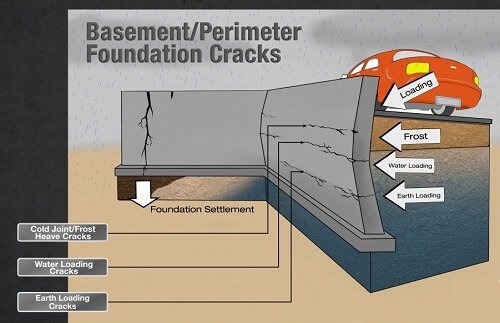
- Hydrostatic Pressure:
- Excessive water buildup in the soil (from rain, snowmelt, or poor drainage) can exert lateral pressure on the walls.
- This pressure causes horizontal cracks or bowing in foundation walls.
- Temperature Fluctuations:
- Expansion and contraction of concrete due to extreme cold winters and warm summers in Toronto.
- Over time, this repeated movement creates stress fractures.
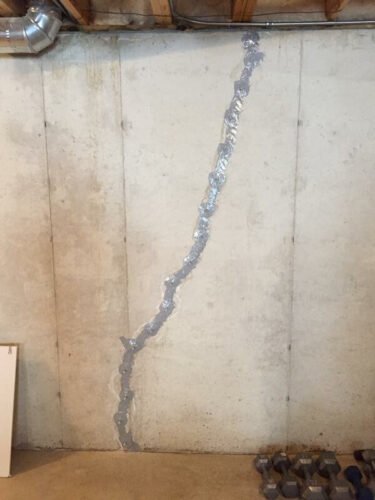
- Poor Construction Practices:
- Using substandard materials or improper curing techniques during construction can weaken the foundation.
- Poor reinforcement can lead to structural instability and cracks.
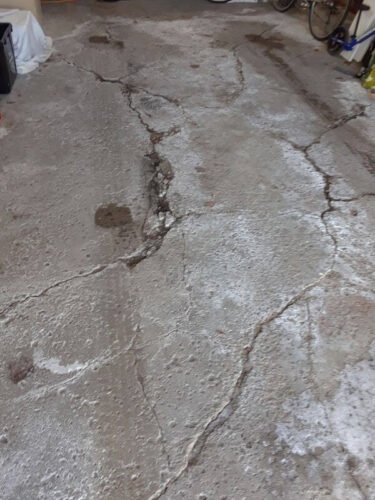
- Tree Roots and Vegetation:
- Roots from large trees near the foundation can grow into the structure, exerting pressure and causing cracks.
- Shrinkage Cracks:
- These occur naturally as concrete cures and dries after being poured.
- They are usually harmless but can allow water to seep through if untreated.
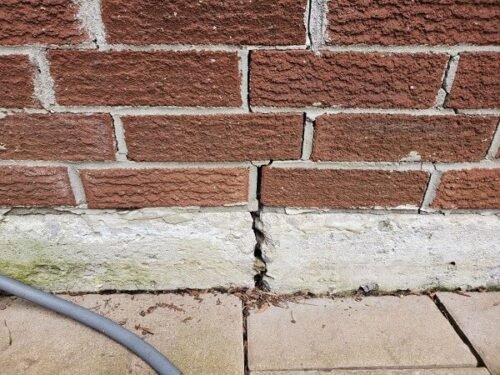
Types of Cracks
- Hairline Cracks:
- Small and thin cracks that may not pose an immediate structural risk.
- Often caused by shrinkage or minor settlement.
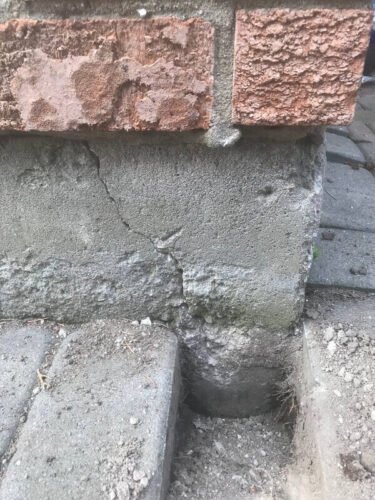
- Horizontal Cracks:
- Typically found in foundation walls due to soil pressure or frost heaving.
- These are more severe and can indicate structural issues.
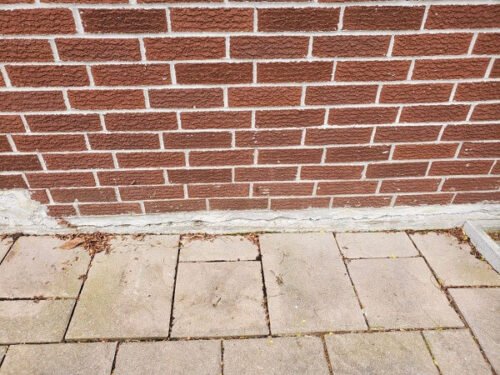
- Vertical Cracks:
- Caused by settlement or minor shifts in the foundation.
- Usually easier to repair but can lead to water infiltration.
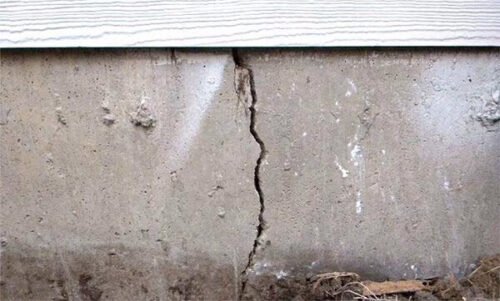
- Diagonal Cracks:
- Often occur near corners and result from uneven settlement or soil pressure.
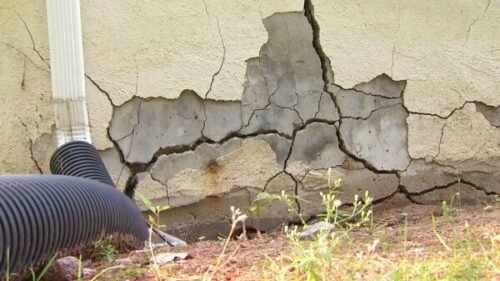
- Often occur near corners and result from uneven settlement or soil pressure.
- Stair-Step Cracks (in brick or block walls):
- Appear in a step-like pattern along mortar joints.
- Indicate movement and potential structural issues.
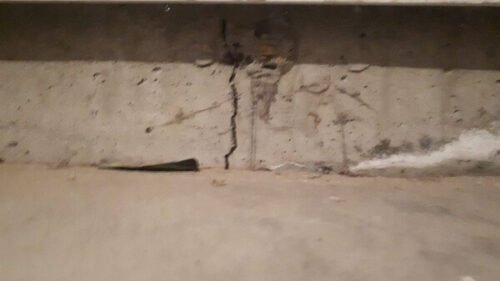
- Slab Cracks:
- Found in concrete floors or slabs, typically due to settlement, heavy loads, or improper reinforcement.
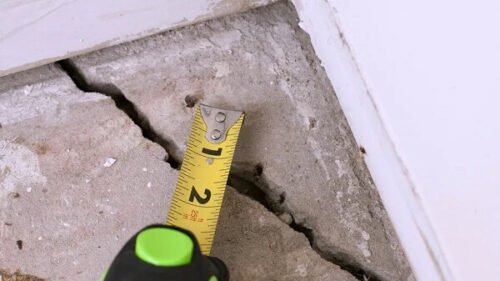
- Found in concrete floors or slabs, typically due to settlement, heavy loads, or improper reinforcement.
How to Repair Foundation and Basement Cracks
Hairline Cracks
- Inspection:
- Check if water is seeping through the crack. If dry, these cracks are often cosmetic.
- Repair:
- Use epoxy injection or urethane caulk to seal the crack.
- For small cosmetic cracks, use a flexible acrylic sealant.
Horizontal Cracks
- Inspection:
- These are serious and often require professional evaluation.
- Repair:
- Reinforce the wall using carbon fiber straps or steel beams.
- If bowing is significant, excavation and external wall bracing might be required.
Vertical Cracks
- Inspection:
- Evaluate for water infiltration or worsening over time.
- Repair:
- Inject polyurethane foam into the crack for waterproofing.
- Use an epoxy resin for structural reinforcement.
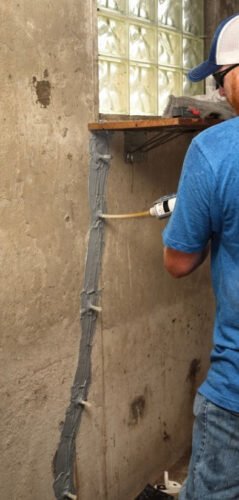
Diagonal Cracks
- Inspection:
- Check for signs of uneven settlement around the foundation.
- Repair:
- Combine epoxy injection with soil stabilization (if settlement is the cause).
- Install helical piers or underpinning to support uneven foundations.
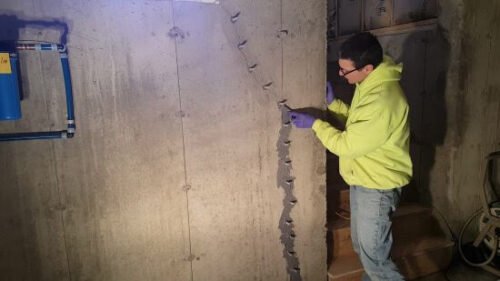
Stair-Step Cracks
- Inspection:
- Look for widening cracks or signs of foundation movement.
- Repair:
- Reinforce the wall using grout injection or carbon fiber materials.
- Address underlying soil issues.
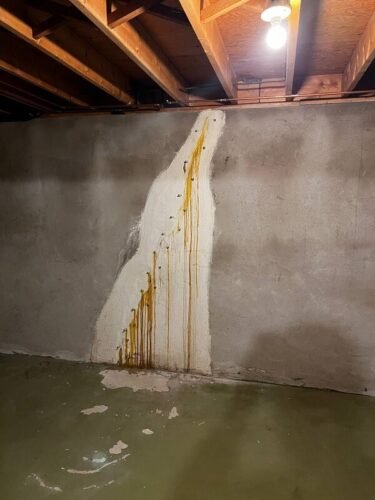
Slab Cracks
- Inspection:
- Test for movement or hollow areas beneath the slab.
- Repair:
- Use self-leveling polyurethane sealant for small cracks.
- For larger cracks, slab jacking or mudjacking can stabilize the slab.
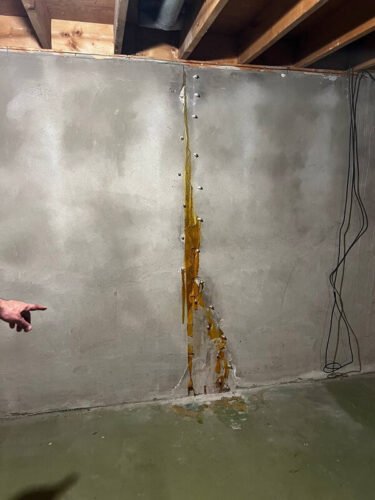
Preventative Measures
- Improve Drainage:
- Ensure proper grading around the foundation so water flows away from the house.
- Install gutters and extend downspouts to prevent water pooling.
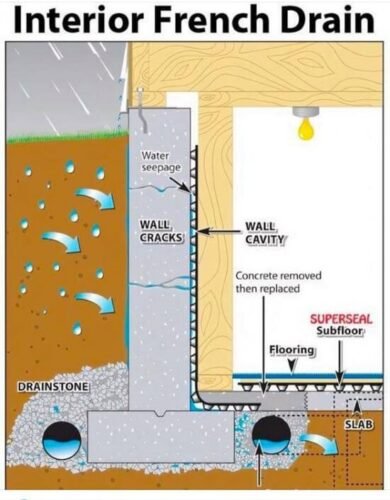
- Control Moisture Levels:
- Use a sump pump to manage basement water levels.
- Install a dehumidifier to reduce humidity in the basement.
- Seal the Foundation:
- Apply a waterproof membrane to the exterior of the foundation.
- Use interior sealants to prevent water infiltration.
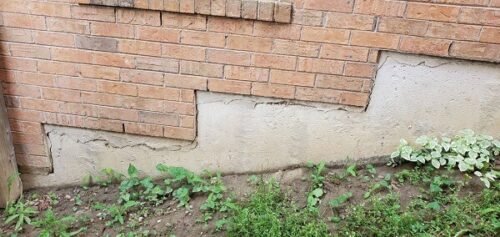
- Address Soil Issues:
- Replace expansive clay soils around the foundation with well-draining gravel or sand.
- Install French drains to reduce hydrostatic pressure.
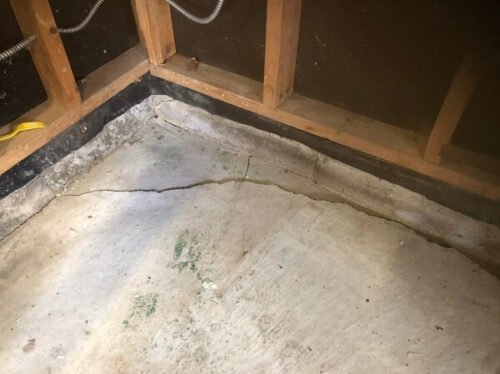
- Reinforce During Construction:
- Use high-quality reinforced concrete and proper curing techniques.
- Add steel rebar or mesh for strength.
- Monitor Trees and Roots:
- Avoid planting large trees near the foundation.
- Regularly inspect for root growth affecting the structure.
When to Call a Professional
- Cracks wider than 1/8 inch or cracks that continue to expand.
- Horizontal or bowing cracks indicating structural issues.
- Water infiltration causing mold, dampness, or standing water.
- Signs of foundation settlement, such as uneven floors or doors that don’t close properly.
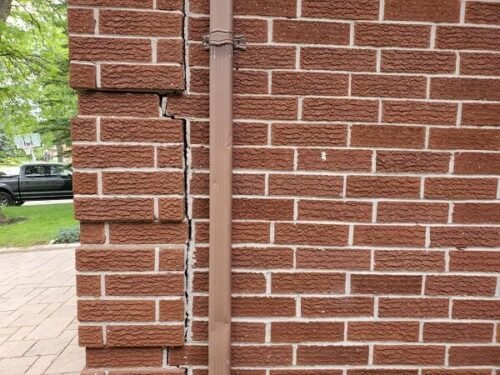
Costs of Repair
- Hairline Crack Sealing: $200–$500 per crack.
- Epoxy/Urethane Injection: $500–$1,000 per crack.
- Carbon Fiber Reinforcement: $1,500–$3,000 per wall.
- Excavation and Waterproofing: $10,000–$20,000 for significant repairs.
- Foundation Underpinning: $5,000–$15,000+ depending on severity.
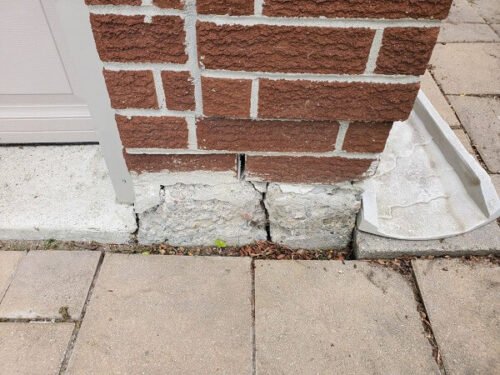
Conclusion
Understanding and addressing basement and foundation cracks is essential for maintaining your home’s structural integrity and value. Regular inspection, preventative measures, and timely repairs can save homeowners in Toronto and North America significant costs and headaches. If cracks persist or worsen, consulting a professional basement renovation team or foundation specialist is always advisable.

